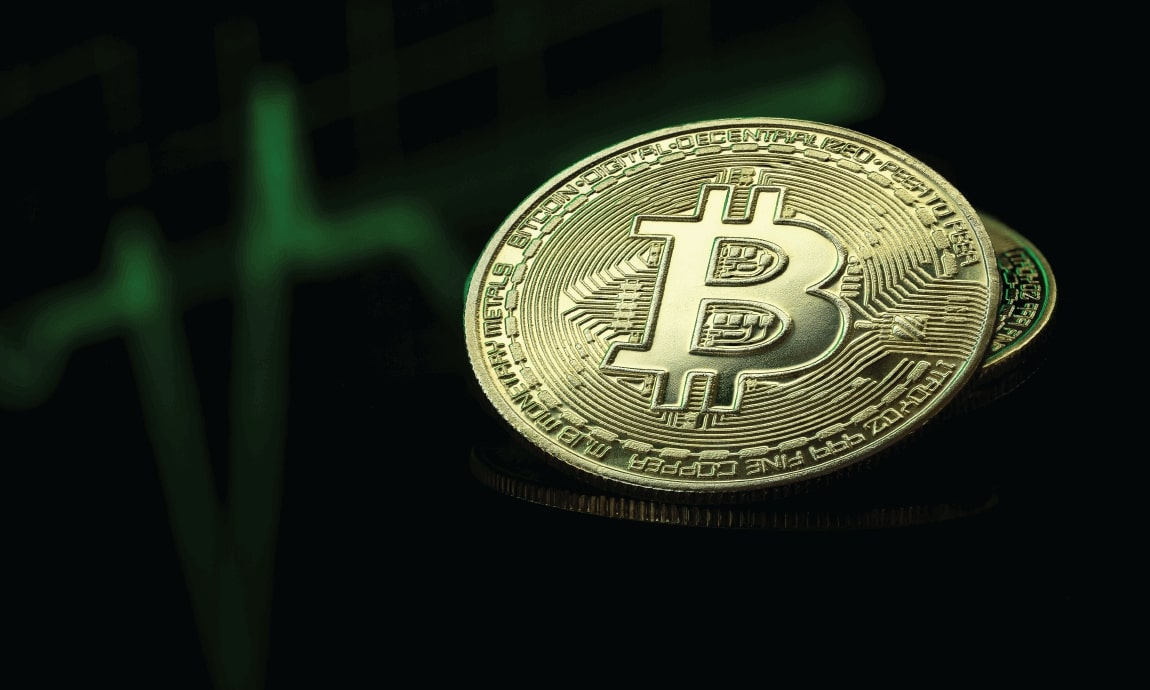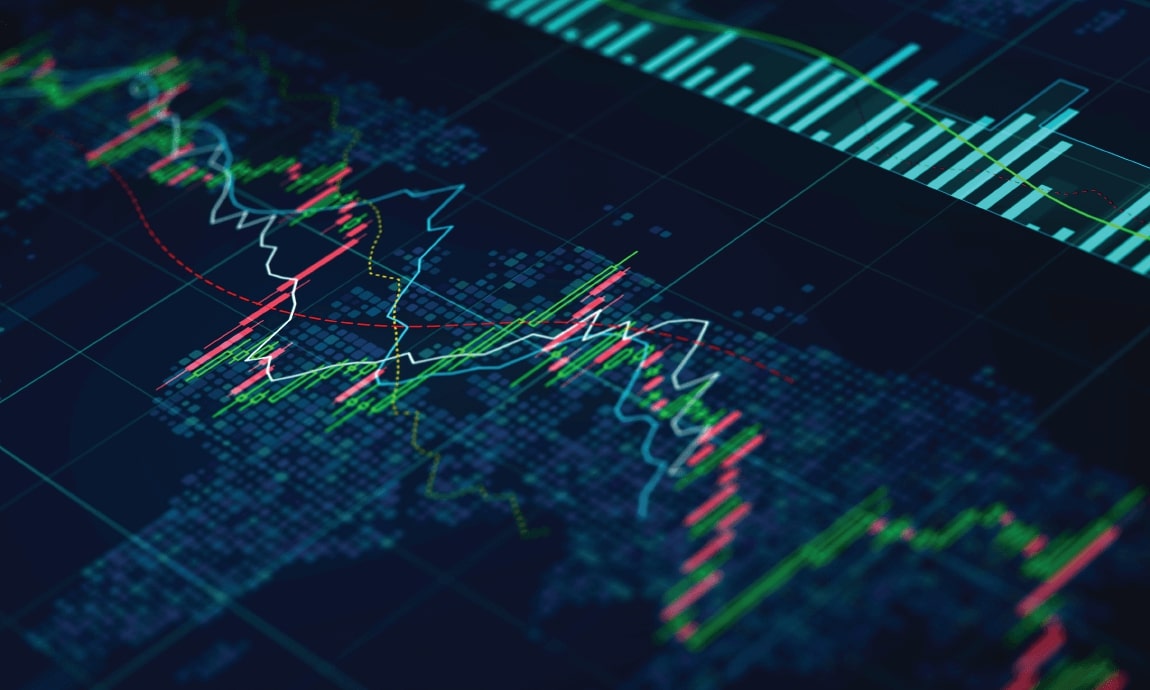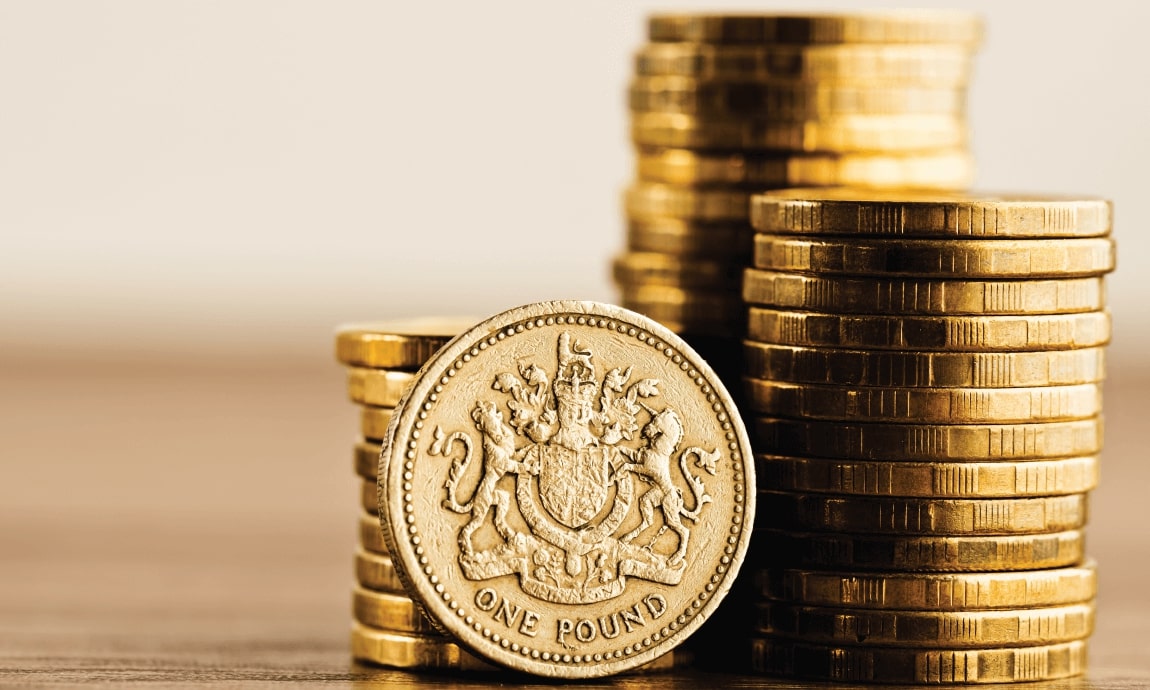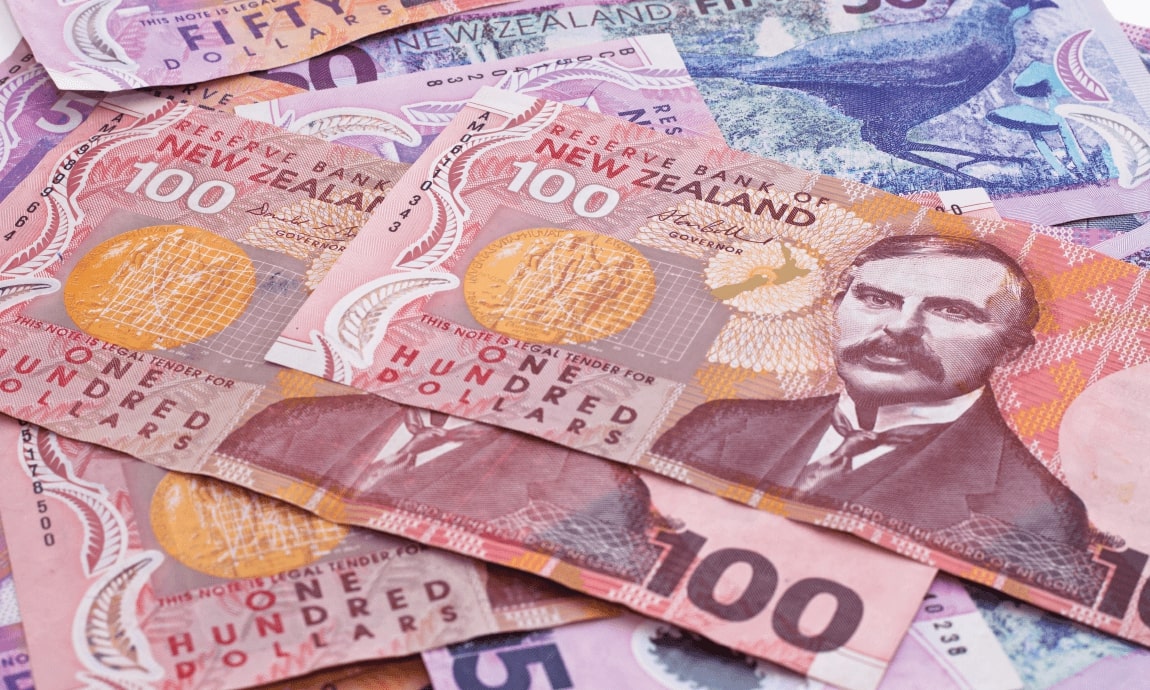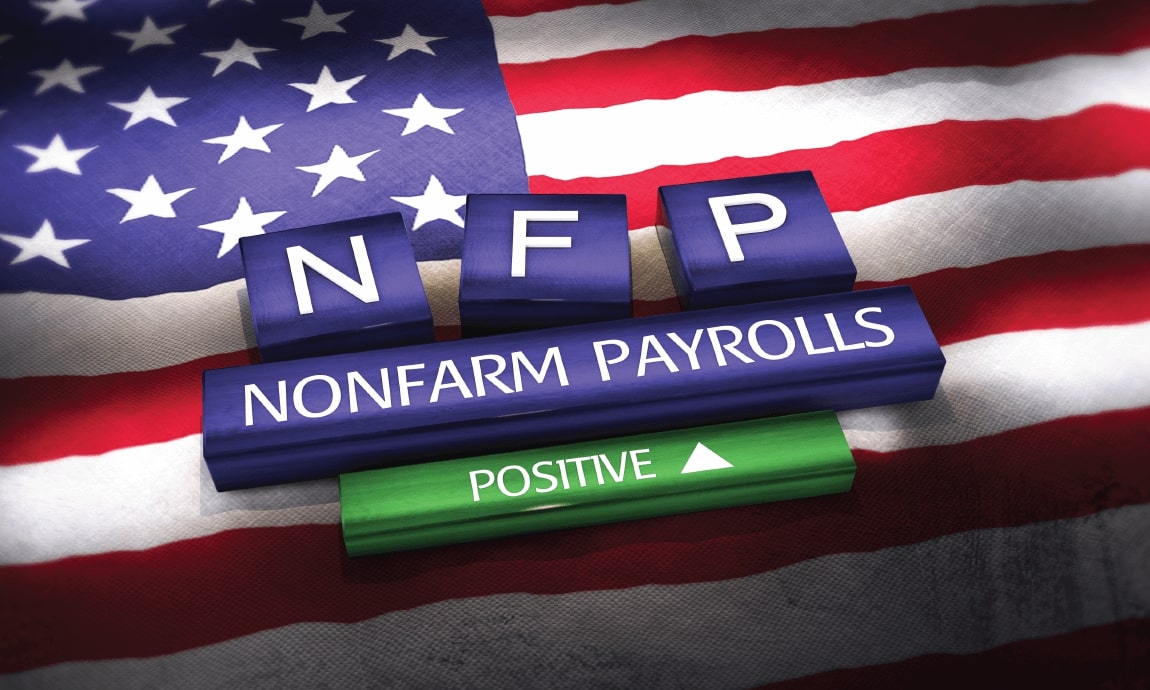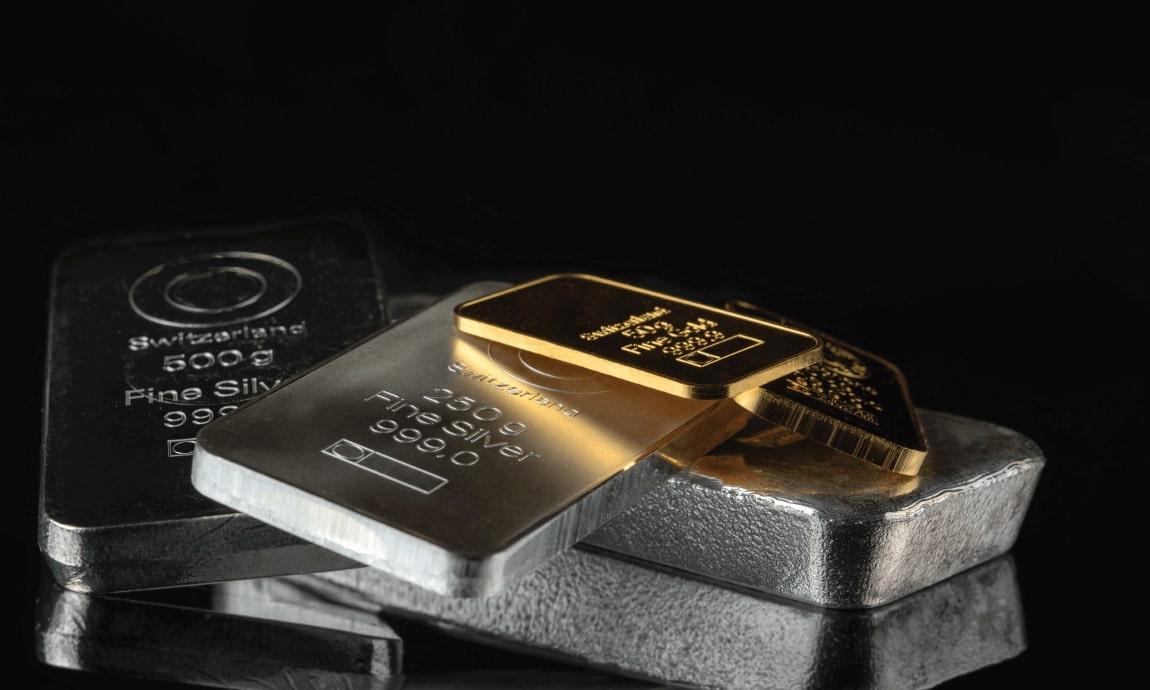The DXY-dollar index retreated further against a basket of currencies this week ahead of the key CPI inflation data due later in the day, which is likely to factor into the Federal Reserve’s plans to raise interest rates on the following FOMC meeting at May 02-03.
A pause in the Fed’s rate hike cycle bodes well for cryptocurrencies and other non-yielding and dollar-denominated assets such as gold and silver which also rallied to yearly highs in the same period, given that it entails a lower opportunity cost for holding such assets.
The DXY-dollar index retreated further against a basket of currencies this week ahead of the key CPI inflation data due later in the day, which is likely to factor into the Federal Reserve’s plans to raise interest rates on the following FOMC meeting at May 02-03.
A pause in the Fed’s rate hike cycle bodes well for cryptocurrencies and other non-yielding and dollar-denominated assets such as gold and silver which also rallied to yearly highs in the same period, given that it entails a lower opportunity cost for holding such assets.
The DXY-dollar index retreated further against a basket of currencies this week ahead of the key CPI inflation data due later in the day, which is likely to factor into the Federal Reserve’s plans to raise interest rates on the following FOMC meeting at May 02-03.
Adding to the above bullish macro drivers, the softening U.S. dollar also supports dollar-sensitive cryptocurrencies, especially the dollar-denominated pairs of Bitcoin/USD, and Ethereum/USD.
A pause in the Fed’s rate hike cycle bodes well for cryptocurrencies and other non-yielding and dollar-denominated assets such as gold and silver which also rallied to yearly highs in the same period, given that it entails a lower opportunity cost for holding such assets.
The DXY-dollar index retreated further against a basket of currencies this week ahead of the key CPI inflation data due later in the day, which is likely to factor into the Federal Reserve’s plans to raise interest rates on the following FOMC meeting at May 02-03.
Adding to the above bullish macro drivers, the softening U.S. dollar also supports dollar-sensitive cryptocurrencies, especially the dollar-denominated pairs of Bitcoin/USD, and Ethereum/USD.
A pause in the Fed’s rate hike cycle bodes well for cryptocurrencies and other non-yielding and dollar-denominated assets such as gold and silver which also rallied to yearly highs in the same period, given that it entails a lower opportunity cost for holding such assets.
The DXY-dollar index retreated further against a basket of currencies this week ahead of the key CPI inflation data due later in the day, which is likely to factor into the Federal Reserve’s plans to raise interest rates on the following FOMC meeting at May 02-03.
As a result, cryptocurrencies have been rallying since early March’s SVB and Signature Bank collapses amid worries over the health of the U.S. banking system and the risk of deposits, with Bitcoin adding over $10,000 per coin, or 50% on this period, and more than 80% year-to-day, while Ethereum has also added 60% for the year so far.
Adding to the above bullish macro drivers, the softening U.S. dollar also supports dollar-sensitive cryptocurrencies, especially the dollar-denominated pairs of Bitcoin/USD, and Ethereum/USD.
A pause in the Fed’s rate hike cycle bodes well for cryptocurrencies and other non-yielding and dollar-denominated assets such as gold and silver which also rallied to yearly highs in the same period, given that it entails a lower opportunity cost for holding such assets.
The DXY-dollar index retreated further against a basket of currencies this week ahead of the key CPI inflation data due later in the day, which is likely to factor into the Federal Reserve’s plans to raise interest rates on the following FOMC meeting at May 02-03.
As a result, cryptocurrencies have been rallying since early March’s SVB and Signature Bank collapses amid worries over the health of the U.S. banking system and the risk of deposits, with Bitcoin adding over $10,000 per coin, or 50% on this period, and more than 80% year-to-day, while Ethereum has also added 60% for the year so far.
Adding to the above bullish macro drivers, the softening U.S. dollar also supports dollar-sensitive cryptocurrencies, especially the dollar-denominated pairs of Bitcoin/USD, and Ethereum/USD.
A pause in the Fed’s rate hike cycle bodes well for cryptocurrencies and other non-yielding and dollar-denominated assets such as gold and silver which also rallied to yearly highs in the same period, given that it entails a lower opportunity cost for holding such assets.
The DXY-dollar index retreated further against a basket of currencies this week ahead of the key CPI inflation data due later in the day, which is likely to factor into the Federal Reserve’s plans to raise interest rates on the following FOMC meeting at May 02-03.
The prospect of an economic recession boosted haven demand for cryptocurrencies, which were on a tear during 2022, as the banking crisis increased expectations that the Fed has limited headroom to keep raising interest rates.
As a result, cryptocurrencies have been rallying since early March’s SVB and Signature Bank collapses amid worries over the health of the U.S. banking system and the risk of deposits, with Bitcoin adding over $10,000 per coin, or 50% on this period, and more than 80% year-to-day, while Ethereum has also added 60% for the year so far.
Adding to the above bullish macro drivers, the softening U.S. dollar also supports dollar-sensitive cryptocurrencies, especially the dollar-denominated pairs of Bitcoin/USD, and Ethereum/USD.
A pause in the Fed’s rate hike cycle bodes well for cryptocurrencies and other non-yielding and dollar-denominated assets such as gold and silver which also rallied to yearly highs in the same period, given that it entails a lower opportunity cost for holding such assets.
The DXY-dollar index retreated further against a basket of currencies this week ahead of the key CPI inflation data due later in the day, which is likely to factor into the Federal Reserve’s plans to raise interest rates on the following FOMC meeting at May 02-03.
The prospect of an economic recession boosted haven demand for cryptocurrencies, which were on a tear during 2022, as the banking crisis increased expectations that the Fed has limited headroom to keep raising interest rates.
As a result, cryptocurrencies have been rallying since early March’s SVB and Signature Bank collapses amid worries over the health of the U.S. banking system and the risk of deposits, with Bitcoin adding over $10,000 per coin, or 50% on this period, and more than 80% year-to-day, while Ethereum has also added 60% for the year so far.
Adding to the above bullish macro drivers, the softening U.S. dollar also supports dollar-sensitive cryptocurrencies, especially the dollar-denominated pairs of Bitcoin/USD, and Ethereum/USD.
A pause in the Fed’s rate hike cycle bodes well for cryptocurrencies and other non-yielding and dollar-denominated assets such as gold and silver which also rallied to yearly highs in the same period, given that it entails a lower opportunity cost for holding such assets.
The DXY-dollar index retreated further against a basket of currencies this week ahead of the key CPI inflation data due later in the day, which is likely to factor into the Federal Reserve’s plans to raise interest rates on the following FOMC meeting at May 02-03.
BTC/USD pair, Daily chart
The prospect of an economic recession boosted haven demand for cryptocurrencies, which were on a tear during 2022, as the banking crisis increased expectations that the Fed has limited headroom to keep raising interest rates.
As a result, cryptocurrencies have been rallying since early March’s SVB and Signature Bank collapses amid worries over the health of the U.S. banking system and the risk of deposits, with Bitcoin adding over $10,000 per coin, or 50% on this period, and more than 80% year-to-day, while Ethereum has also added 60% for the year so far.
Adding to the above bullish macro drivers, the softening U.S. dollar also supports dollar-sensitive cryptocurrencies, especially the dollar-denominated pairs of Bitcoin/USD, and Ethereum/USD.
A pause in the Fed’s rate hike cycle bodes well for cryptocurrencies and other non-yielding and dollar-denominated assets such as gold and silver which also rallied to yearly highs in the same period, given that it entails a lower opportunity cost for holding such assets.
The DXY-dollar index retreated further against a basket of currencies this week ahead of the key CPI inflation data due later in the day, which is likely to factor into the Federal Reserve’s plans to raise interest rates on the following FOMC meeting at May 02-03.
BTC/USD pair, Daily chart
The prospect of an economic recession boosted haven demand for cryptocurrencies, which were on a tear during 2022, as the banking crisis increased expectations that the Fed has limited headroom to keep raising interest rates.
As a result, cryptocurrencies have been rallying since early March’s SVB and Signature Bank collapses amid worries over the health of the U.S. banking system and the risk of deposits, with Bitcoin adding over $10,000 per coin, or 50% on this period, and more than 80% year-to-day, while Ethereum has also added 60% for the year so far.
Adding to the above bullish macro drivers, the softening U.S. dollar also supports dollar-sensitive cryptocurrencies, especially the dollar-denominated pairs of Bitcoin/USD, and Ethereum/USD.
A pause in the Fed’s rate hike cycle bodes well for cryptocurrencies and other non-yielding and dollar-denominated assets such as gold and silver which also rallied to yearly highs in the same period, given that it entails a lower opportunity cost for holding such assets.
The DXY-dollar index retreated further against a basket of currencies this week ahead of the key CPI inflation data due later in the day, which is likely to factor into the Federal Reserve’s plans to raise interest rates on the following FOMC meeting at May 02-03.
BTC/USD pair, Daily chart
The prospect of an economic recession boosted haven demand for cryptocurrencies, which were on a tear during 2022, as the banking crisis increased expectations that the Fed has limited headroom to keep raising interest rates.
As a result, cryptocurrencies have been rallying since early March’s SVB and Signature Bank collapses amid worries over the health of the U.S. banking system and the risk of deposits, with Bitcoin adding over $10,000 per coin, or 50% on this period, and more than 80% year-to-day, while Ethereum has also added 60% for the year so far.
Adding to the above bullish macro drivers, the softening U.S. dollar also supports dollar-sensitive cryptocurrencies, especially the dollar-denominated pairs of Bitcoin/USD, and Ethereum/USD.
A pause in the Fed’s rate hike cycle bodes well for cryptocurrencies and other non-yielding and dollar-denominated assets such as gold and silver which also rallied to yearly highs in the same period, given that it entails a lower opportunity cost for holding such assets.
The DXY-dollar index retreated further against a basket of currencies this week ahead of the key CPI inflation data due later in the day, which is likely to factor into the Federal Reserve’s plans to raise interest rates on the following FOMC meeting at May 02-03.
Bitcoin broke through the $30,000 level for the first time since early-June 2022 as investors increased bets across the cryptocurrency ecosystem on growing fears that the collapse of several U.S. regional banks coupled with rising interest rates and resilient inflation could trigger a potential recession in the United States and abroad this year.
BTC/USD pair, Daily chart
The prospect of an economic recession boosted haven demand for cryptocurrencies, which were on a tear during 2022, as the banking crisis increased expectations that the Fed has limited headroom to keep raising interest rates.
As a result, cryptocurrencies have been rallying since early March’s SVB and Signature Bank collapses amid worries over the health of the U.S. banking system and the risk of deposits, with Bitcoin adding over $10,000 per coin, or 50% on this period, and more than 80% year-to-day, while Ethereum has also added 60% for the year so far.
Adding to the above bullish macro drivers, the softening U.S. dollar also supports dollar-sensitive cryptocurrencies, especially the dollar-denominated pairs of Bitcoin/USD, and Ethereum/USD.
A pause in the Fed’s rate hike cycle bodes well for cryptocurrencies and other non-yielding and dollar-denominated assets such as gold and silver which also rallied to yearly highs in the same period, given that it entails a lower opportunity cost for holding such assets.
The DXY-dollar index retreated further against a basket of currencies this week ahead of the key CPI inflation data due later in the day, which is likely to factor into the Federal Reserve’s plans to raise interest rates on the following FOMC meeting at May 02-03.
Bitcoin broke through the $30,000 level for the first time since early-June 2022 as investors increased bets across the cryptocurrency ecosystem on growing fears that the collapse of several U.S. regional banks coupled with rising interest rates and resilient inflation could trigger a potential recession in the United States and abroad this year.
BTC/USD pair, Daily chart
The prospect of an economic recession boosted haven demand for cryptocurrencies, which were on a tear during 2022, as the banking crisis increased expectations that the Fed has limited headroom to keep raising interest rates.
As a result, cryptocurrencies have been rallying since early March’s SVB and Signature Bank collapses amid worries over the health of the U.S. banking system and the risk of deposits, with Bitcoin adding over $10,000 per coin, or 50% on this period, and more than 80% year-to-day, while Ethereum has also added 60% for the year so far.
Adding to the above bullish macro drivers, the softening U.S. dollar also supports dollar-sensitive cryptocurrencies, especially the dollar-denominated pairs of Bitcoin/USD, and Ethereum/USD.
A pause in the Fed’s rate hike cycle bodes well for cryptocurrencies and other non-yielding and dollar-denominated assets such as gold and silver which also rallied to yearly highs in the same period, given that it entails a lower opportunity cost for holding such assets.
The DXY-dollar index retreated further against a basket of currencies this week ahead of the key CPI inflation data due later in the day, which is likely to factor into the Federal Reserve’s plans to raise interest rates on the following FOMC meeting at May 02-03.
The price of the largest cryptocurrency by market cap Bitcoin jumped above the key $30,000 psychological level on Tuesday morning after a nearly 10% rally during the weekend, while Ethereum also briefly rose above the $1,900 mark on safety bets following bank closures and a softening dollar.
Bitcoin broke through the $30,000 level for the first time since early-June 2022 as investors increased bets across the cryptocurrency ecosystem on growing fears that the collapse of several U.S. regional banks coupled with rising interest rates and resilient inflation could trigger a potential recession in the United States and abroad this year.
BTC/USD pair, Daily chart
The prospect of an economic recession boosted haven demand for cryptocurrencies, which were on a tear during 2022, as the banking crisis increased expectations that the Fed has limited headroom to keep raising interest rates.
As a result, cryptocurrencies have been rallying since early March’s SVB and Signature Bank collapses amid worries over the health of the U.S. banking system and the risk of deposits, with Bitcoin adding over $10,000 per coin, or 50% on this period, and more than 80% year-to-day, while Ethereum has also added 60% for the year so far.
Adding to the above bullish macro drivers, the softening U.S. dollar also supports dollar-sensitive cryptocurrencies, especially the dollar-denominated pairs of Bitcoin/USD, and Ethereum/USD.
A pause in the Fed’s rate hike cycle bodes well for cryptocurrencies and other non-yielding and dollar-denominated assets such as gold and silver which also rallied to yearly highs in the same period, given that it entails a lower opportunity cost for holding such assets.
The DXY-dollar index retreated further against a basket of currencies this week ahead of the key CPI inflation data due later in the day, which is likely to factor into the Federal Reserve’s plans to raise interest rates on the following FOMC meeting at May 02-03.
The price of the largest cryptocurrency by market cap Bitcoin jumped above the key $30,000 psychological level on Tuesday morning after a nearly 10% rally during the weekend, while Ethereum also briefly rose above the $1,900 mark on safety bets following bank closures and a softening dollar.
Bitcoin broke through the $30,000 level for the first time since early-June 2022 as investors increased bets across the cryptocurrency ecosystem on growing fears that the collapse of several U.S. regional banks coupled with rising interest rates and resilient inflation could trigger a potential recession in the United States and abroad this year.
BTC/USD pair, Daily chart
The prospect of an economic recession boosted haven demand for cryptocurrencies, which were on a tear during 2022, as the banking crisis increased expectations that the Fed has limited headroom to keep raising interest rates.
As a result, cryptocurrencies have been rallying since early March’s SVB and Signature Bank collapses amid worries over the health of the U.S. banking system and the risk of deposits, with Bitcoin adding over $10,000 per coin, or 50% on this period, and more than 80% year-to-day, while Ethereum has also added 60% for the year so far.
Adding to the above bullish macro drivers, the softening U.S. dollar also supports dollar-sensitive cryptocurrencies, especially the dollar-denominated pairs of Bitcoin/USD, and Ethereum/USD.
A pause in the Fed’s rate hike cycle bodes well for cryptocurrencies and other non-yielding and dollar-denominated assets such as gold and silver which also rallied to yearly highs in the same period, given that it entails a lower opportunity cost for holding such assets.
The DXY-dollar index retreated further against a basket of currencies this week ahead of the key CPI inflation data due later in the day, which is likely to factor into the Federal Reserve’s plans to raise interest rates on the following FOMC meeting at May 02-03.

